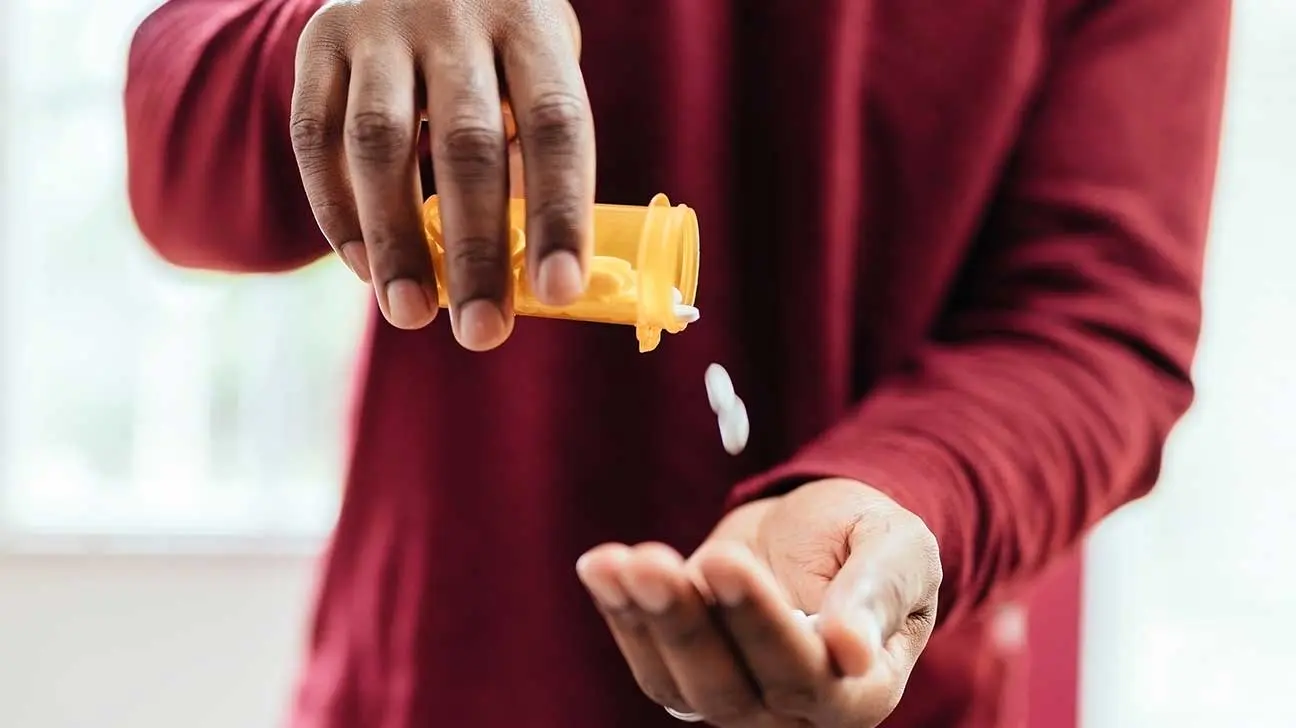
Klonopin is a popular brand name for a type of benzodiazepine called clonazepam which is commonly used to treat anxiety, panic disorder, epilepsy, and certain types of seizure disorders.
Similar prescription drugs include Xanax (alprazolam), Ativan (lorazepam), and Valium (diazepam).
Using Klonopin is also known to cause drowsiness and sedation in the short-term, as well as a mild euphoria. In high doses it can be used as a sleep aid.
The sedative effects of Klonopin may contribute to its risk for benzodiazepine addiction.
Why Klonopin Is A Controlled Substance
Klonopin is considered a controlled substance and is a Schedule IV drug according to the United States Drug Enforcement Administration (DEA).
Schedule IV drugs have a low potential for abuse and dependence, and possess known medical value.
What Klonopin Abuse Looks Like
People may abuse Klonopin in a number of ways, including by taking more of the prescription drug than intended, doctor shopping for multiple prescriptions, or taking Klonopin in ways that are not prescribed.
Some signs of Klonopin misuse include:
- increased tolerance
- change in school or work performance
- increased anxiety when not taking Klonopin
- doctor shopping
- withdrawing from family and friends
Street Names For Klonopin
When Klonopin is obtained illegally on the streets, it can be referred to by a variety of different names in order to evade law enforcement.
Benzodiazepines in general are often referred to as “benzos” or “nerve pills” on the streets.
Common street names for clonazepam include:
- k
- k-pin
- pin
- super Valium
Learn more about the street names for Klonopin.
How Much Klonopin Costs On The Street
On the street, a single dose of Klonopin can cost anywhere from about $2 to $10 depending on the strength of the pill, which comes in both 1 milligram (mg) and 2 mg varieties.
The cost of Klonopin pills on the street will also depend on the local demand for the drug as well as the local availability.
Read about the street price of Klonopin.
Methods Of Klonopin Abuse
In addition to taking Klonopin orally in tablet form, there are other methods of abuse that people may use to feel the effects of Klonopin much faster and much more intensely.
Note that taking Klonopin in any way other than as prescribed is considered drug abuse.
Snorting Klonopin
When someone snorts Klonopin, the pill first has to be crushed into powder before it can be inhaled through the nasal passage.
This method of use can increase a person’s risk for adverse side effects, overdose, and death.
When taken this way, a person can feel the effects of the drug much more quickly and much more strongly.
This is because the drug can bypass the digestive system and go straight to the central nervous system.
Learn more about snorting Klonopin.
Plugging Klonopin
Another method of Klonopin use is through plugging. In this method, Klonopin is dissolved into a liquid and injected into the rectum with a needleless syringe.
This method is not as popular as methods like snorting and taking pills orally.
Taking drugs this way causes a faster onset of effects and a more intense high. It can also be one of the riskiest methods of drug use and poses one of the highest risks of overdose.
Read about plugging Klonopin.
Mixing Klonopin With Other Substances
As a benzodiazepine, Klonopin can lead to dangerous interactions with some substances.
Both stimulants, which have opposing effects, and other depressants, which have amplifying effects, can have negative consequences when mixed with Klonopin.
Consider the risks of the following Klonopin drug combinations:
- Klonopin and alcohol: These are both CNS depressants and, when used together, can slow a person’s vital functions such as heart rate and breathing.
- Klonopin and heroin: Both of these are depressants, and using them together can greatly increase a person’s risk of overdose or death.
- Klonopin and cocaine: As a stimulant, cocaine has the opposite effects of Klonopin, and the opposing effects combined can be dangerous or even deadly.
- Klonopin and Xanax: Combining two benzos can amplify the effects of both and greatly increase a person’s risk for loss of consciousness, overdose, or death.
- Klonopin and Adderall: Mixing “uppers” and “downers” does not cancel out each drug’s effects but instead increases a person’s risk for overdose.
- Klonopin and methadone: Benzos and opioids are dangerous to take together, as they are both CNS depressants and will amplify each other’s effects and risks.
Dangers Of Klonopin Use
Abuse of Klonopin presents a number of health risks, such as the following.
Klonopin Withdrawal
Withdrawing from Klonopin can result in strong cravings for the drug, especially if someone has built up a tolerance to or dependence on the drug.
It can also result in dangerous withdrawal symptoms such as seizures and psychosis, which can be lethal if not treated.
Klonopin Overdose
While it is not common for a person to overdose on Klonopin alone, it is possible and will require a trip to the emergency room.
Overdose is much more common when Klonopin is combined with other drugs.
How Much Klonopin Does It Take To Fatally Overdose?
Fatalities from Klonopin by itself are extremely rare. A typical daily dose of Klonopin is 1.5 mg and adults have been reported taking more than 20 mg and recovering completely.
Klonopin is far more likely to cause an overdose if it is combined with other drugs like alcohol or opioids.
In this case, the amount of Klonopin that could potentially result in an overdose would be much smaller than when taken on its own.
Learn more about the lethal dose of Klonopin.
How Long Klonopin Stays In The System
The most common methods for detecting Klonopin or other drugs in a person’s system are through blood testing, urine testing, saliva testing, and hair testing.
How long Klonopin stays in a person’s system will depend on various factors, such as their dosage size, frequency of use, and body composition.
Find out more about Klonopin detection times.
Klonopin In The Blood
On average, Klonopin remains detectable in a person’s blood for up to three days or more after their last dose.
However, Klonopin is not immediately detectable in a person’s blood after their last dose, so blood testing is not a common method of detection used with Klonopin.
Read more about how long Klonopin stays in the blood.
Klonopin In Urine
Klonopin is detectable in a person’s urine for between 3 and 30 days after their last dose was taken.
Urine testing is currently the most common method of testing for Klonopin used by employers and medical professionals.
Find out how long Klonopin stays in urine.
Klonopin In The Hair
Hair testing can detect the presence of Klonopin in a person’s system for the longest amount of time, though it will depend on various factors, such as a person’s metabolic rate.
With hair drug testing, Klonopin can be detected in a person’s system for up to four months after the last dose was taken.
Learn about how long Klonopin stays in the hair.
The Klonopin Detox Process
It is never recommended that a person try to quit Klonopin cold turkey, and professional addiction treatment at a healthcare center is the best option when detoxing.
With medically supervised detoxification, a person can stop using Klonopin through guided tapering and experience minimal withdrawal symptoms.
Learn more about Klonopin detox.
Treatment Options For Klonopin Addiction
When a person chooses to continue at either an inpatient or outpatient treatment program, they will have an opportunity to address their mental health.
It is important to treat both a person’s drug addiction and any mental illness to prevent relapse.
When choosing a treatment center, it helps to select one that features marks of quality care and is trusted in the community where it’s located.
Some treatment methods to treat benzodiazepine addictions include detox, behavioral therapy, group counseling, and medication management.
Find Substance Use Disorder Treatment
If you or a loved one can no longer safely go off benzos without medical supervision at a treatment facility, know that help is available to guide you to Klonopin addiction recovery.
Call our helpline any time to start the process towards substance abuse recovery for yourself or a family member.
Addiction Resource aims to provide only the most current, accurate information in regards to addiction and addiction treatment, which means we only reference the most credible sources available.
These include peer-reviewed journals, government entities and academic institutions, and leaders in addiction healthcare and advocacy. Learn more about how we safeguard our content by viewing our editorial policy.
- National Library of Medicine: MedlinePlus — Clonazepam
https://medlineplus.gov/druginfo/meds/a682279.html - United States Drug Enforcement Administration (DEA) — Benzodiazepines
https://www.dea.gov/factsheets/benzodiazepines - United States Food and Drug Administration (FDA) — Klonopin Tablets
https://www.accessdata.fda.gov/drugsatfda_docs/label/2017/017533s059lbl.pdf


